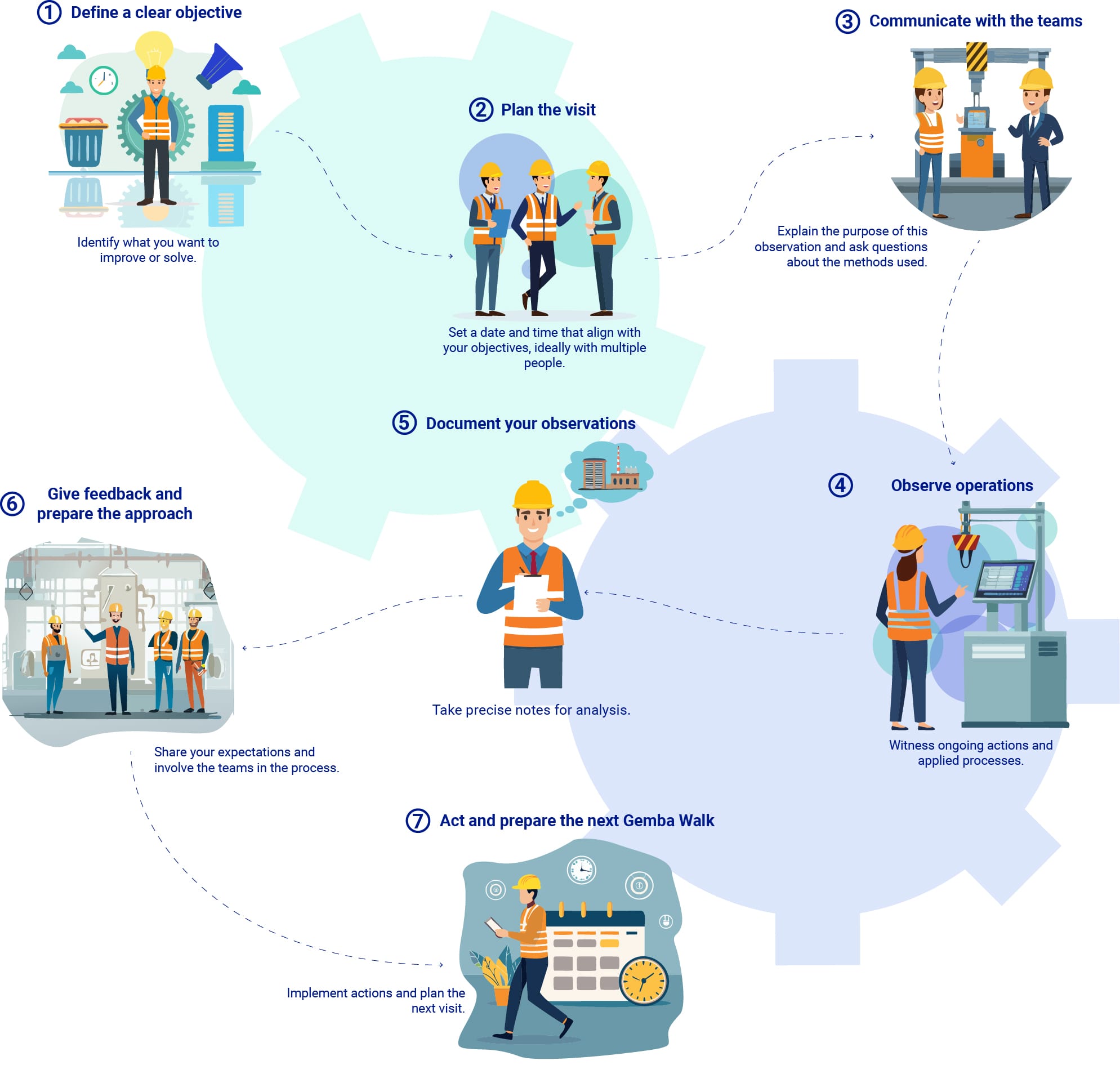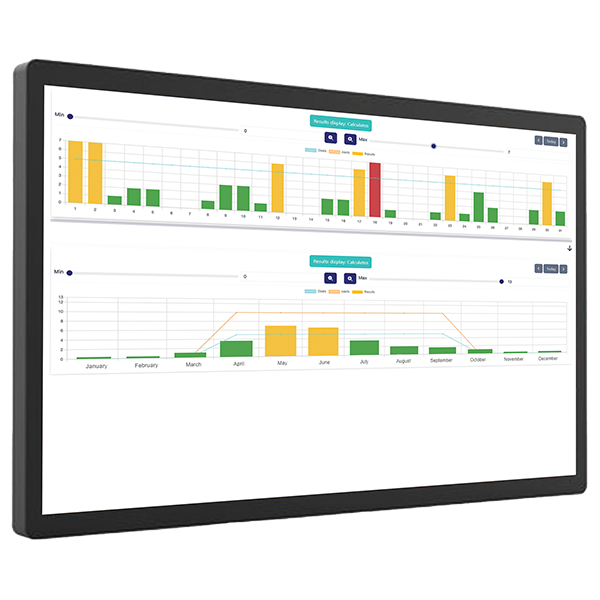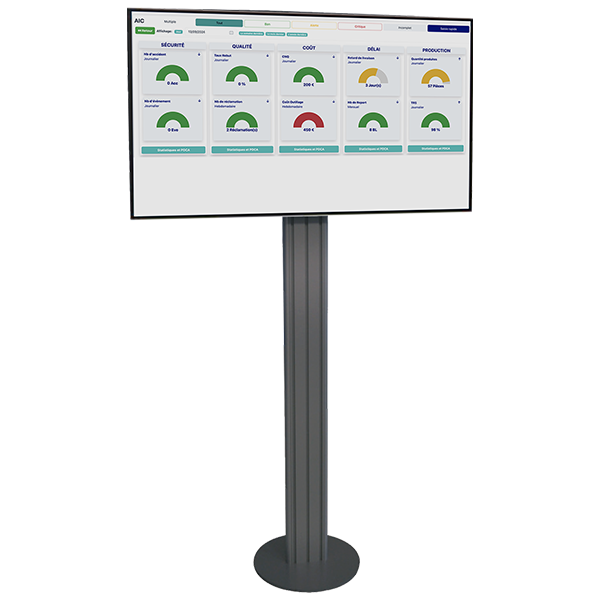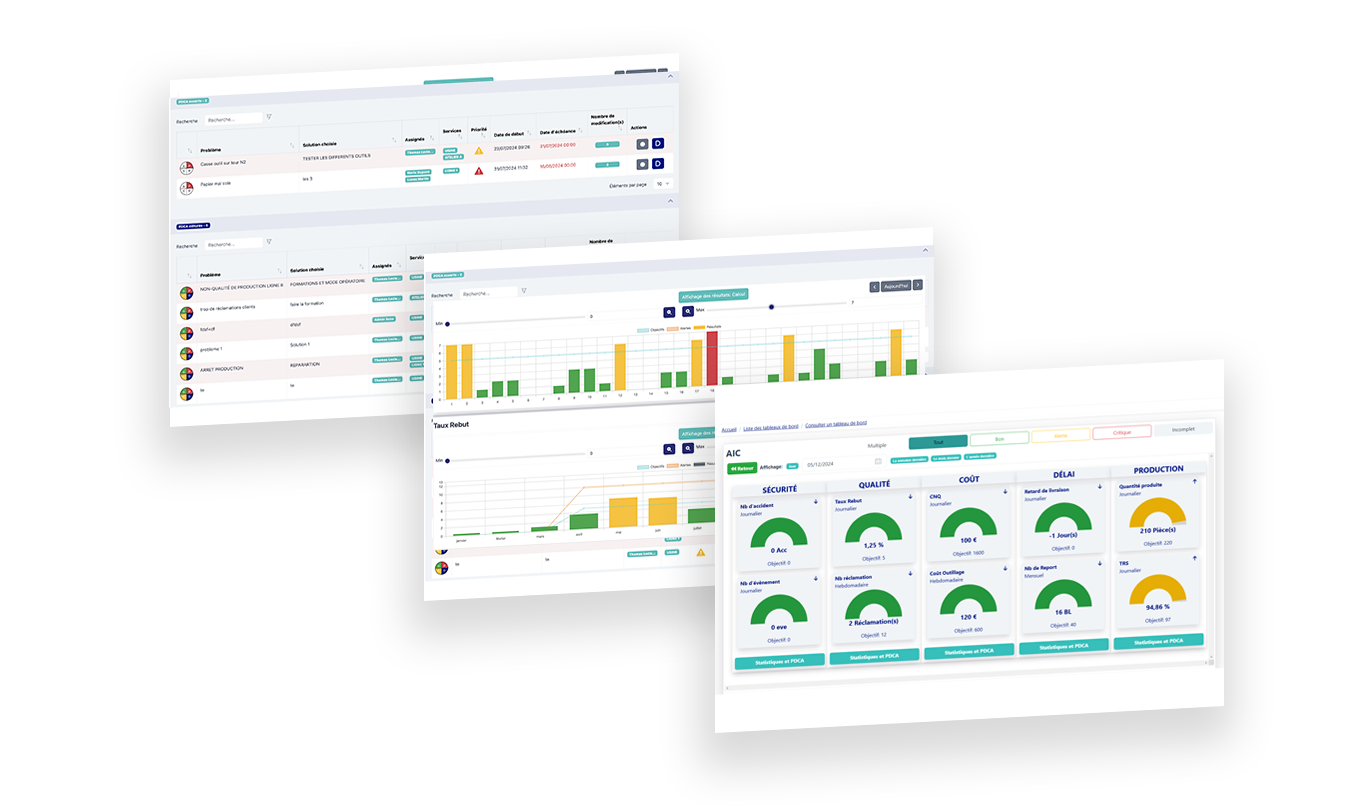Optimize Your Internal Audits
SESA CHECK is your digital solution for conducting internal audits with ease. Whether it's to apply, evaluate, analyze process implementation, or identify anomalies, auditing becomes a powerful tool in your continuous improvement approach (Kaizen). With customizable forms, this application aWith customizable forms, this application allows you to conduct audits and checklists directly from your smartphone or tablet while centralizing and analyzing data in real time for better risk and non-compliance management.

Conduct Your Audits with Ease
The SESA CHECK application simplifies the execution of internal audit tasks, a key element of Lean Management. It enables real-time data collection and analysis, providing rigorous monitoring of your processes. Now, you can enhance the efficiency of your audits with full flexibility, thanks to an intuitive interface and powerful tools accessible from any device.
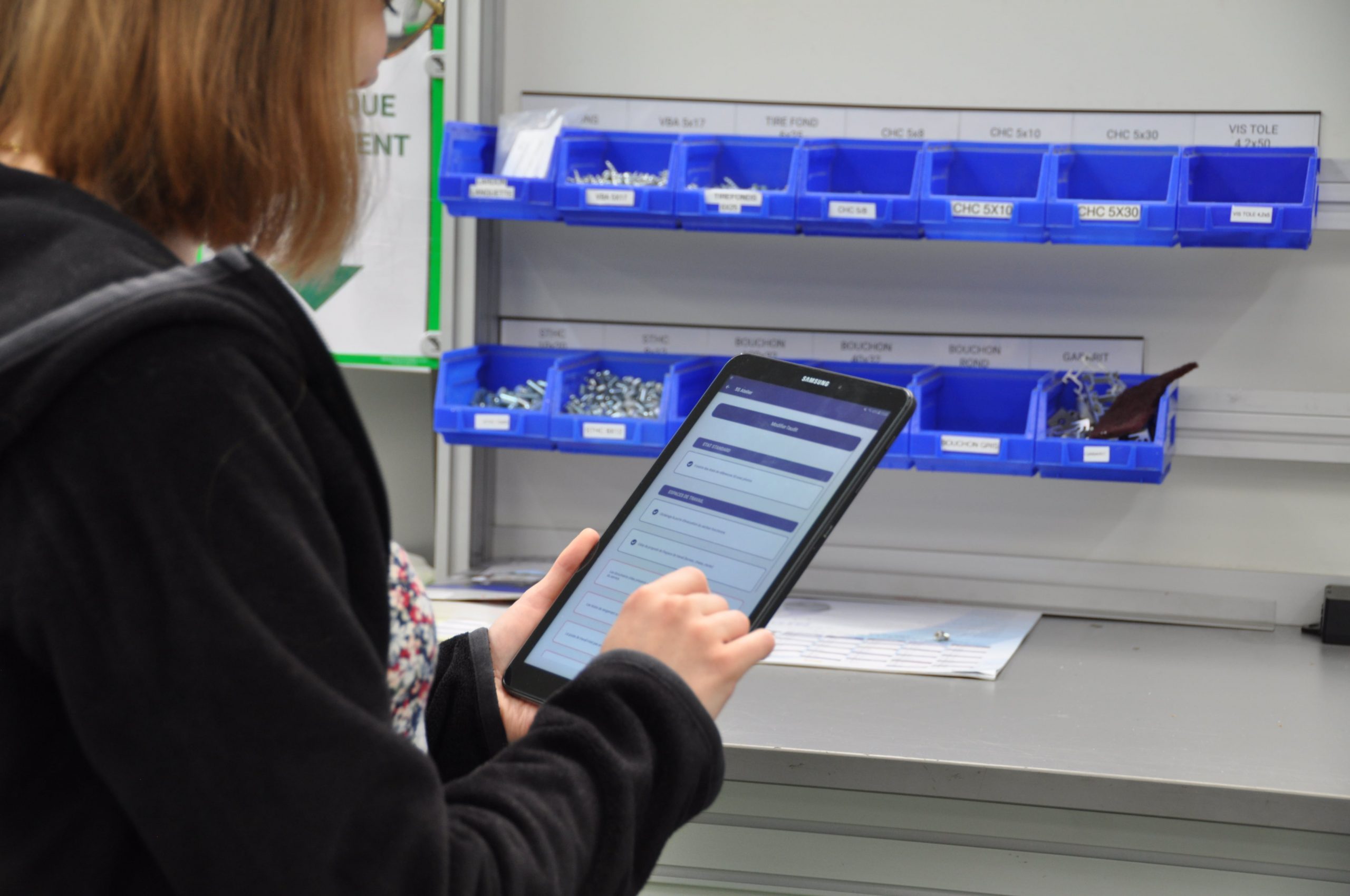
A Flexible and Accessible Application
Available on Android and iOS, SESA CHECK allows you to customize each audit form to suit your specific needs. With just a few clicks, perform detailed inspections and generate instant reports. Whether you are in a workshop, production, or management, this platform provides full visibility into your internal processes, ensuring compliance and continuous improvement for your organization.
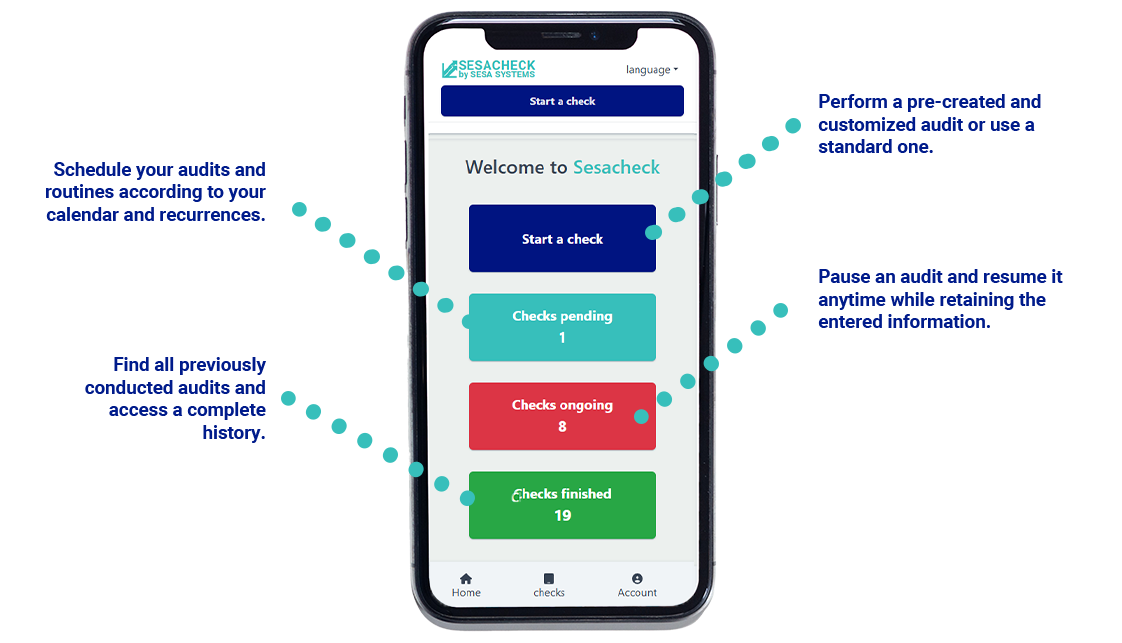
What is a Gemba Walk?
The term "Gemba" comes from Japanese and means "the actual place" or "the field." In an industrial context, Gemba represents the place where value is created—whether it is a production line, a workshop, or a supply chain. The Gemba Walk involves managers and leaders going directly to the field to observe activities, understand processes, and interact with employees. This approach aims to identify improvement opportunities based on factual observations.
Main objectives of the Gemba Walk:
- Understand on-the-ground realities: Observe processes as they occur.
- Identify problems: Detect inefficiencies or waste (also known as "muda" in lean management).
- Encourage collaboration: Create constructive dialogue with teams.
- Promote continuous improvement: Foster concrete and measurable actions.
SUCCESSFULLY EXECUTE YOUR GEMBA WALK IN INDUSTRY ➔

Integration of the Gemba Walk with SESA CHECK
SESA CHECK is a digital solution that simplifies and optimizes the implementation of the Gemba Walk. Here’s how this tool can transform your practice:
1. Simplified Planning
- Complete audit process management: SESA CHECK supports you at every stage, from visit preparation to the generation of detailed reports.
- Creation of customized checklists: Adapt checklists to the specific objectives of the Gemba Walk, whether it’s 5S audits, SMED, or safety.
2. Real-Time Data Collection and Documentation
- Intuitive data collection: Use the mobile app to capture observations in real-time, even offline.
- Photo capture and comment addition: Document identified issues with visual evidence and precise annotations.
- Standardization of forms: Audits conducted during the Gemba Walk are structured and comply with your internal procedures.
3. Monitoring and Analyzing Actions
- Audit progress tracking: Visualize the status of corrective actions in real-time to ensure proper execution.
- Analytical dashboards: Analyze observation results and detect new improvement opportunities using dynamic indicators.
4. Enhanced Traceability and Collaboration
- Consolidated history: Review past reports and observations to better understand trends.
- Uploading to SESAHUB: Share results, reports, and action plans with your teams for seamless collaboration.
1. Define a clear objective
Before going to the field, it is essential to define the objective of your Gemba Walk. This means understanding what you want to accomplish: observing processes, identifying improvement opportunities, listening to employee feedback, or validating hypotheses. The objective must be specific and measurable. For example, you may want to observe how a particular process works or assess team adherence to a new procedure. A clear objective will help focus attention on the most important elements and guide discussions with the teams.
Tips:
- Involve stakeholders in defining the objectives.
- Ensure that the objective is aligned with the company’s strategy.
- Prioritize the most critical areas or processes.
2. Plan the visit
Good planning is essential to make the most of your Gemba Walk. This step involves choosing the right time for the visit, identifying key people to meet, and defining the route to take. Also, consider operational constraints such as production schedules, team hours, etc. The planning must be flexible enough to adapt to unforeseen circumstances while staying focused on the defined objectives.
Tips:
- Coordinate with department managers to avoid disrupting their work.
- Choose a time slot where the activities are representative of the team's daily routine.
- Allow enough time to avoid disrupting productivity.
3. Communicate with the teams
Communication before, during, and after the Gemba Walk is crucial. Before the visit, inform the teams about your approach, explain the purpose of your presence, and show that you are there to observe and understand, not to judge. During the visit, make sure to maintain an open dialogue and actively listen. Encourage employees to share their concerns, suggestions, and observations. This step helps build trust and engage employees in the continuous improvement process.
Tips:
- Explain the reasons for the visit and how it fits into continuous improvement.
- Reassure employees by stating that this is not an inspection, but an observation.
- Adopt a listening posture, without judgment.
4. Observe and do not control
One of the fundamental rules of a Gemba Walk is to observe without interfering in the activities. You need to be an objective observer, not directly intervene, nor impose changes on the floor during your visit. The goal is to understand how the process actually works and gather information on the challenges faced by the teams. Stay discreet, observe the workflow, the ergonomics of the workstations, the interactions between employees, and note any problems or obstacles. Avoid asking too many questions during the visit so as not to disrupt the ongoing work.
Tips:
- Remain neutral and detached in your observations.
- Do not make any changes during the visit; changes will come later.
- Focus on processes, tools, behaviors, and outcomes.
5. Document your observations
One of the most important steps in a Gemba Walk is documentation. Take detailed notes of your observations: strengths, issues encountered, employee suggestions, and improvement opportunities. It is crucial to capture factual elements and organize the collected information for later analysis. Photos or videos can be useful to support your observations. Be sure to keep written records that can be used to prepare feedback for the teams and for subsequent analysis.
Tips:
- Note exactly what is happening without immediately interpreting it.
- Capture the ideas or concerns expressed by the teams.
- Use tools like observation grids or checklists.
6. Provide feedback and prepare the approach
After the Gemba Walk, it is essential to prepare constructive feedback for the teams. This involves sharing your observations honestly and transparently, emphasizing the positive aspects while identifying areas for improvement. You should also link your observations to the company’s strategic objectives. The feedback should take the form of a collaborative discussion, where you can propose improvement ideas while allowing the teams to express their own. This feedback should also include concrete actions and a plan to address the identified issues.
Tips:
- Schedule a meeting to share the results of the Gemba Walk.
- Highlight successes while addressing areas for improvement.
- Involve employees in the process of finding solutions.
7. Act and prepare for the next Gemba Walk
Finally, a Gemba Walk should not be a one-time event. It must be part of an ongoing improvement process. After providing feedback to the teams and taking concrete actions to solve the identified problems, prepare to follow up on progress. This can include tracking the actions implemented and reevaluating processes. Additionally, prepare for your next Gemba Walk by taking into account the lessons learned and adjusting your priorities based on evolving challenges.
Tips:
- Measure the impact of the actions taken following the first Gemba Walk.
- Regularly schedule Gemba Walks to ensure continuous improvement.
- Stay flexible to adjust the objectives of future visits based on feedback.
Application of the Gemba Walk in 7 Steps
